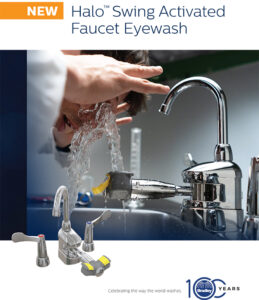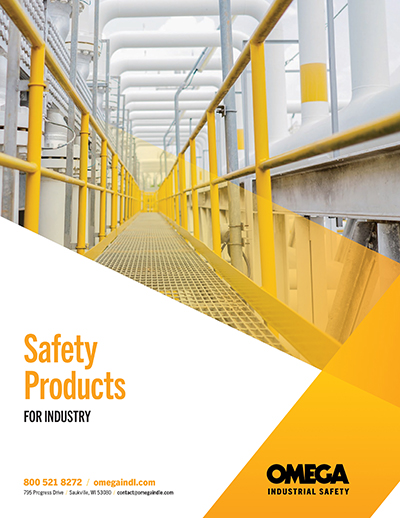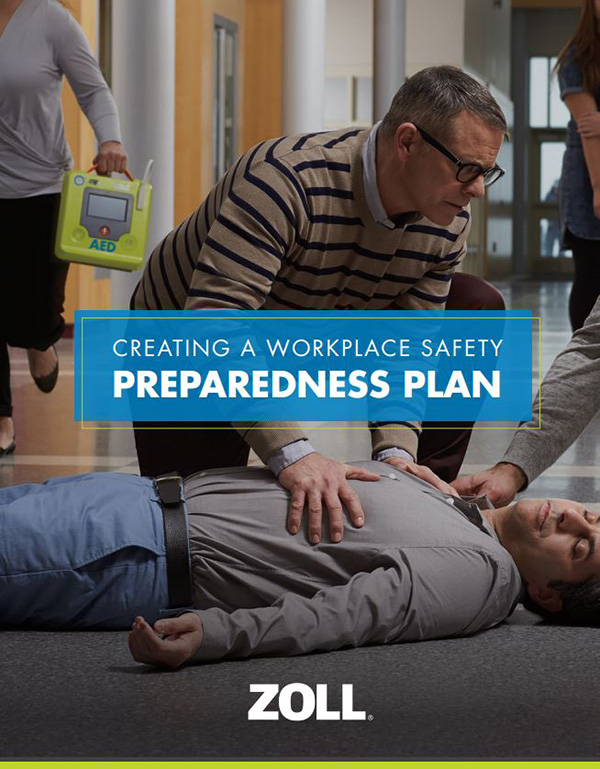Resource Center
Construction Worker Safety Guide
In America alone, 7 million construction workers go to work each day. Even though the job is much safer than it used to be, there are still many risks inherit in being a construction worker. In this construction worker safety guide you can read about all of the safety regulations, safety tips for employers and employees, and more.
All workplaces have a responsibility to keep their employees safe. Even if your organization has stringent safety protocols in place, it’s crucial to be prepared for different types of workplace injuries and other unexpected incidents. Download this eBook for tips and recommendations on how to create and implement a safety preparedness plan for your workplace.
ANSI/ASSP Z10.0 – Safety and Health Management Systems
The ANSI/ASSP Z10.0 standard centers around seven key elements that serve as the foundation for developing and improving an Occupational Health and Safety Management System (OHSMS): Worker participation, Management leadership, Planning, Support, Implementation and operation, Evaluation and corrective action, and Management review. Two additional documents from the ANSI/ASSP Z10 Committee offer guidance for implementing and maintaining an OHSMS to help put organizations of all sizes on a path to continuous improvement.
One key aspect of Z10.0 and these supplemental guidance documents is that they encourage safety professionals to consider safety and health management in the context of their organization. The standard also emphasizes the importance of collaboration between workers and management in developing a successful safety management system. As such, the standard and implementation guides provide an organization flexibility to implement the standard in a way that meets its specific needs.
ASSP GM-Z10.100-2019, Guidance and Implementation Manual for ANSI/ASSP Z10.0-2019 Occupational Health and Safety Management Systems, provides step-by-step direction for implementing the different elements of an OHSMS, from establishing roles and responsibilities and conducting a risk assessment to performing incident investigations and tracking metrics.
The step-by-step guidance is paired with tools that an organization can use to carry out each step of implementing and improving its OHSMS. These include an example audit protocol, conformance scorecard and incident investigation form, as well as a table that compares different OHSMS standards including Z10, ISO 45001 and OHSAS 18001.
ASSP GM-Z10.101-2019, Guidance Manual: Keeping Your People Safe in Smaller Organizations, helps small businesses understand the importance of having an OHSMS, the fundamentals of safety and health management and how to get started developing a safety management system. This document is offered as a free download on the ASSP website.
Purchase the Z10 standard and implementation guide on the ASSP website.
ISO 45001 – The Global Safety Management Systems Standard
ISO 45001 is a global standard for occupational safety and health management systems that provides practical solutions for worker safety. The standard provides a framework from which OSH objectives can be effectively managed. For example, it can serve the needs of those who manage, use or benefit from global supply chains. Just as ISO 9000 and ISO 14000 have provided consensus solutions to questions of quality management and environmental protection in the global marketplace, ISO 45001 helps drive solutions for improving worker safety across the globe.
The standard provides eleven success factors for the implementation of an OHSMS, and guidance on how it can be carried out. To understand how ISO 45001 will fit into a safety management system, it’s important to examine what standards and systems are already in place. For example, some organizations have adopted ISO 9001 (quality) and ISO 14001 (environment), which contain the same core language as ISO 45001. If an organization is already using ISO 9000 and ISO 14001 and is familiar with this management system approach, integration of 45001 becomes much less complex and the transition can be made more seamlessly.
Organizations should determine the desired priorities for their OHSMS, as well as the safety and business performance goals the organization hopes to achieve through the implementation of ISO 45001. They can then align the implementation of the standard with actual business objectives. Identifying business objectives in terms of occupational safety and health and aligning them to ISO 45001 allows business to generate metrics by which they can measure the success of the OHSMS and make adjustments and improvements over time. Performance can be tracked against the goals and objectives that have been identified to continuously improve both safety and business performance across the entire organization.
Purchase the ANSI/ASSP/ISO 45001 standard on the ASSP website.
ANSI/ASSP/ISO 31000 – Risk Management
Effective risk management is what prevents injuries and fatalities and enables workers to do their jobs safely. The challenge lies in finding solutions that adequately address the hazards and risks workers encounter in your workplace.The world of occupational safety and health offers many tools and resources to help keep workers safe. One such tool focused specifically on risk management is ISO 31000, Risk Management - Guidelines, which provides guidelines and best practices for improving risk management, regardless of the size of the organization.
The standard is an open, principles-based system, meaning that an organization can apply the principles in the standard to any organizational context, be it an oil company, a pharmaceutical company, higher education or elsewhere. The standard also provides direction on how to integrate risk-based decision-making across the entire culture including governance, planning, management and reporting.
The 2018 revision of ISO 31000 places a greater focus on creating and protecting value as the key driver of risk management. It also includes the consideration of human and cultural factors, such as cognitive biases. You can begin with identifying where safety fits into the organizational context and overall management goals. Risk examination should include internal and external risks, as well as a forward-looking mind-set to assess emerging risks. This will help an organization develop a holistic process for identifying risks so that it can be more thoughtful about risk-based resource allocation, thereby providing assurance that the company is headed in the right direction.
Organizations can then tailor training and risk assessment tools to each working environment. This provides workers the knowledge they need to understand the risks they face each day and to properly protect themselves and their coworkers from injuries. The goal for risk management is to develop a culture in which all stakeholders are aware of the importance of monitoring and managing risk.
Purchase the ANSI/ASSP/ISO 31000 standard on the ASSP website.
ANSI/ASSP Z117.1 – Keeping Workers Safe in Confined Spaces
Confined spaces present several safety and health risks for the more than two million workers who enter, exit and work in those environments each year. To effectively address the hazards that workers face in confined spaces, it’s important to understand what a confined space is and how such an environment differs from other conditions that workers may encounter.
OSHA defines a confined space as a space that: is large enough and so configured that an employee can bodily enter and perform assigned work. Has limited means for exit and entry (e.g., tanks, vessels, silos, storage bins, hoppers, vaults and pits). Is not designed for continuous employee occupancy.
A confined space may contain any number of hazards, from biological and mechanical to physical, chemical or atmospheric. The space may be oxygen-deficient or oxygen-enriched. It may contain bacteria capable of producing flammable or toxic gases, as well as physical hazards such as electrical or radiological risks, structural issues or the potential for engulfment, where a worker is surrounded and effectively captured by a liquid or flowable solid substance.
To address whatever hazards may exist in a confined space, a qualified person should conduct an initial survey of the operations to be performed. Z117 defines a qualified person as “a person who by reason of training, education and experience is knowledgeable in the operation to be performed and is competent to judge the hazards involved and specify controls and/or protective measures.”
The initial survey should document the number of employees working in the space; the likelihood, magnitude and potential consequences of each hazard; and potential changes in conditions or activities. With this information, you can then develop strategies for mitigating each hazard using the hierarchy of controls.
Confined spaces are divided into two categories, permit-required and non-permit-required. What separates these two categories are the conditions in the space. A permit-required confined space has one or more of the following characteristics: contains or has the potential to contain a hazardous atmosphere, contains a material that has the potential to engulf an entrant, has an internal configuration such that an entrant could be trapped or asphyxiated by inwardly converging walls or by a floor that slopes downward and tapers to a small section, contains any other recognized serious safety or health hazard.
For entry into non-permit-required spaces, an employer must develop and implement safe work procedures. This should include assessing the conditions and precautions needed for safe entry, as well as identifying what constitutes a change in conditions, which would require a reevaluation of the confined space.
Purchase the ANSI/ASSP Z177.1 standard on the ASSP website.
ANSI/ASSP Z390.1 – Hydrogen Sulfide Training Programs
Originally created in 1994, ANSI/ASSP Z390.1, Accepted Practices for Hydrogen Sulfide Training Programs, was developed to establish appropriate hydrogen sulfide (H2S) safety training for those working in the oil and gas industry.
The need for such a standard arose from the fact that hydrogen sulfide is one of the primary hazards associated with oil and gas operations. Without proper training on what to do when encountering the gas, human exposure to hydrogen sulfide can have serious health consequences and even lead to death, emphasizing the importance of the Z390.1 standard.
Although the original intent of the standard was to address hazards associated with oil and gas, over time the Z390.1 committee recognized that petrochemical plants, paper mills, research laboratories, municipal sewer systems and others have hydrogen sulfide hazards as well. This led the committee to publish a 2017 revision (ANSI/ASSP Z390.1-2017) of the standard, which incorporates information to accommodate the needs of other industries. In addition, changes were made to update references to technology, as well as editorial cleanup and reorganization to make the standard more user-friendly.
The most significant change in the revised version is an update to the time-weighted average threshold limit values (TLV-TWA). The American Conference of Governmental Industrial Hygienists (ACGIH) has changed is established TLV-TWA from 10 ppm to 1 ppm. Since the standard’s previous version anticipated training based on the 10 ppm measurement level, Z390.1 was revised accordingly.
ANSI/ASSP Z390.1-2017 provides the flexibility for instructors or instructing organizations to use their own judgment to determine the appropriate action levels based on state, federal and local regulations, consensus standards and local safety assessments. This allows individuals and organizations to assess the safe action level depending on the work setting. Furthermore, the revision states that workers should only be trained on material that is applicable to their potential exposure.
One way in which the revised standard is more stringent is in the area of visitor safety training. In the past, when VIPs visited certain locations with potential hydrogen sulfide hazards, they would receive a 15-minute presentation on hydrogen sulfide safety, then be allowed on to the drill floor. ANSI/ASSP Z390.1-2017 does not approve of this practice. Instead, the Z390.1 committee advises anyone visiting a site with potential hydrogen sulfide hazards to take a full four-hour class prior to their visit.
In addition, it is recommended that anyone working in a location where a hydrogen sulfide hazard has been identified be trained to an established minimum standard. Z390.1-2017 establishes four hours of training, which includes discussion of properties and characteristics of hydrogen sulfide, gas detection, respiratory protection and contingency plans.
Purchase the ANSI/ASSP Z390.1 standard on the ASSP website.






